SPF 101: Choosing the Right Sunscreen for Your Skin Type
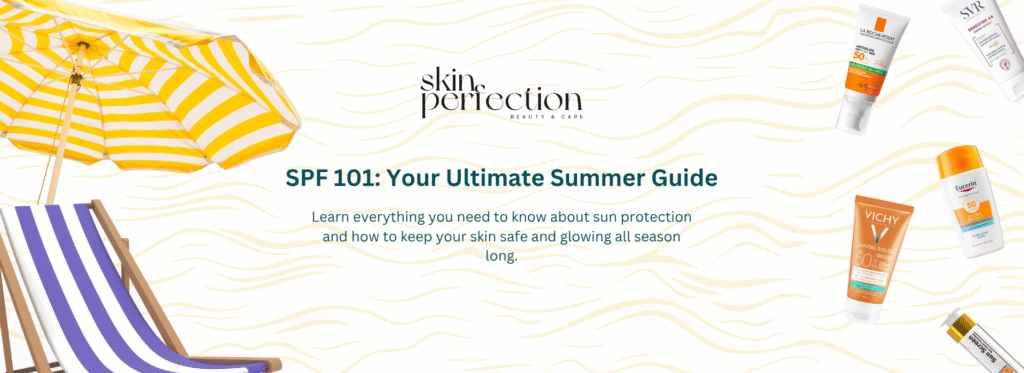
Why Sunscreen Is a Daily Essential
Summer is right around the corner, and that means more sunshine, longer days and more exposure to harmful UV rays. Sunscreen isn’t just a beach-day essential; it’s your daily shield against sun damage, premature aging, dark spots, and even skin cancer.
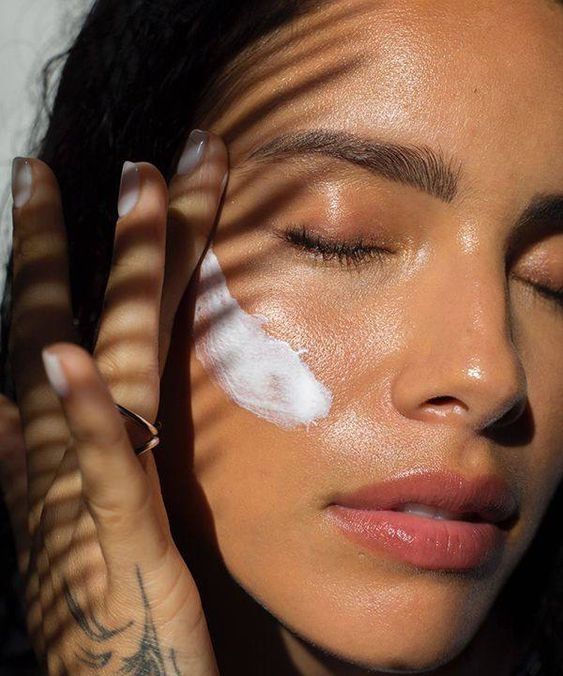
Still, with so many SPF numbers, textures, and formulas available, choosing the right one can feel overwhelming. Whether you have oily, dry, sensitive, or combination skin, this guide will help you find the perfect sunscreen for your needs and show you exactly how to use it for maximum protection.
What Does SPF Actually Mean?
SPF stands for Sun Protection Factor. It tells you how well a sunscreen protects your skin from UVB rays: the rays that cause sunburn and long-term skin damage. Here’s what the numbers really mean:
- SPF 30 blocks about 97% of UVB rays
- SPF 50 blocks around 98%
- SPF 100 blocks up to 99%
That 1–2% difference might seem small, but over time, it can make a big difference, especially for sensitive, acne-prone, or pigmentation-prone skin.
UVB vs. UVA — and Why You Need Both
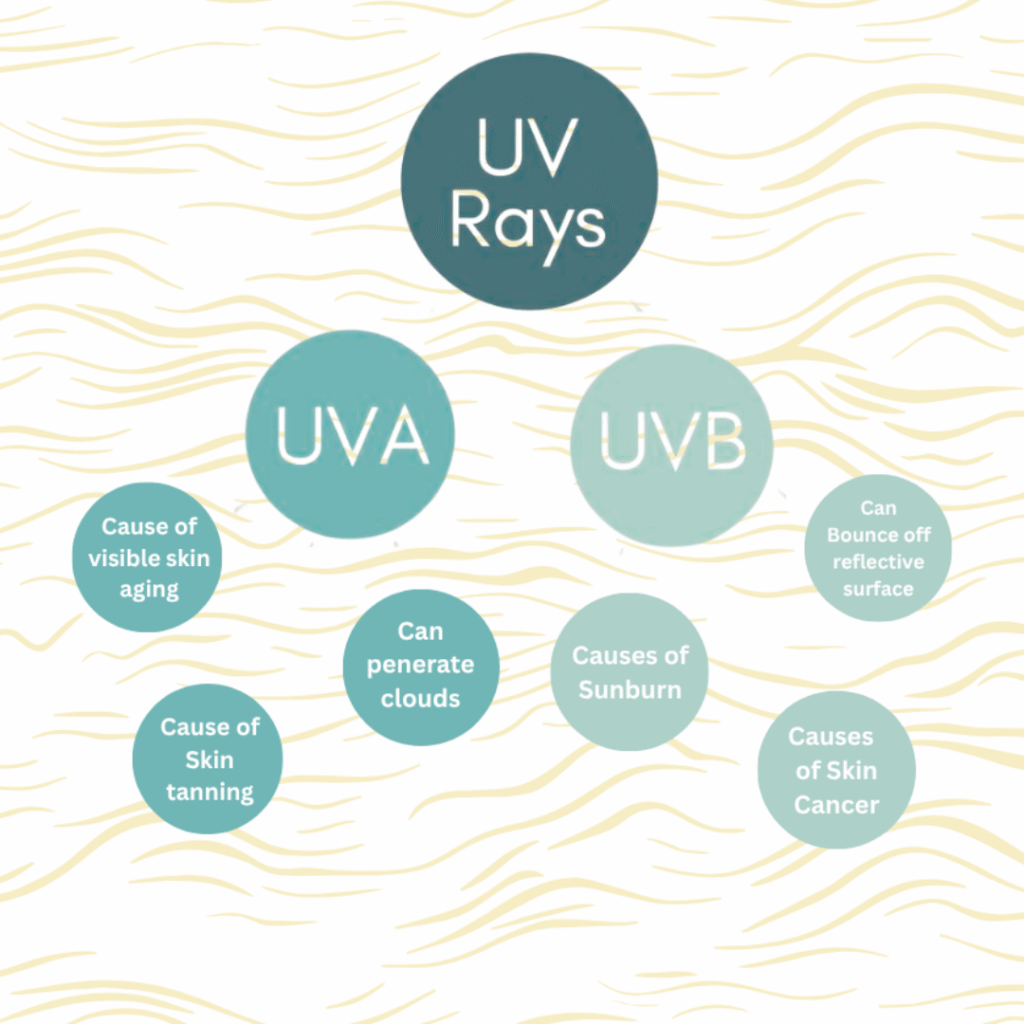
UVB rays cause visible sunburn. UVA rays penetrate deeper, leading to wrinkles, fine lines, and sun spots. For full protection, always choose a sunscreen labeled broad-spectrum, which means it protects against both.
When and How Often to Reapply
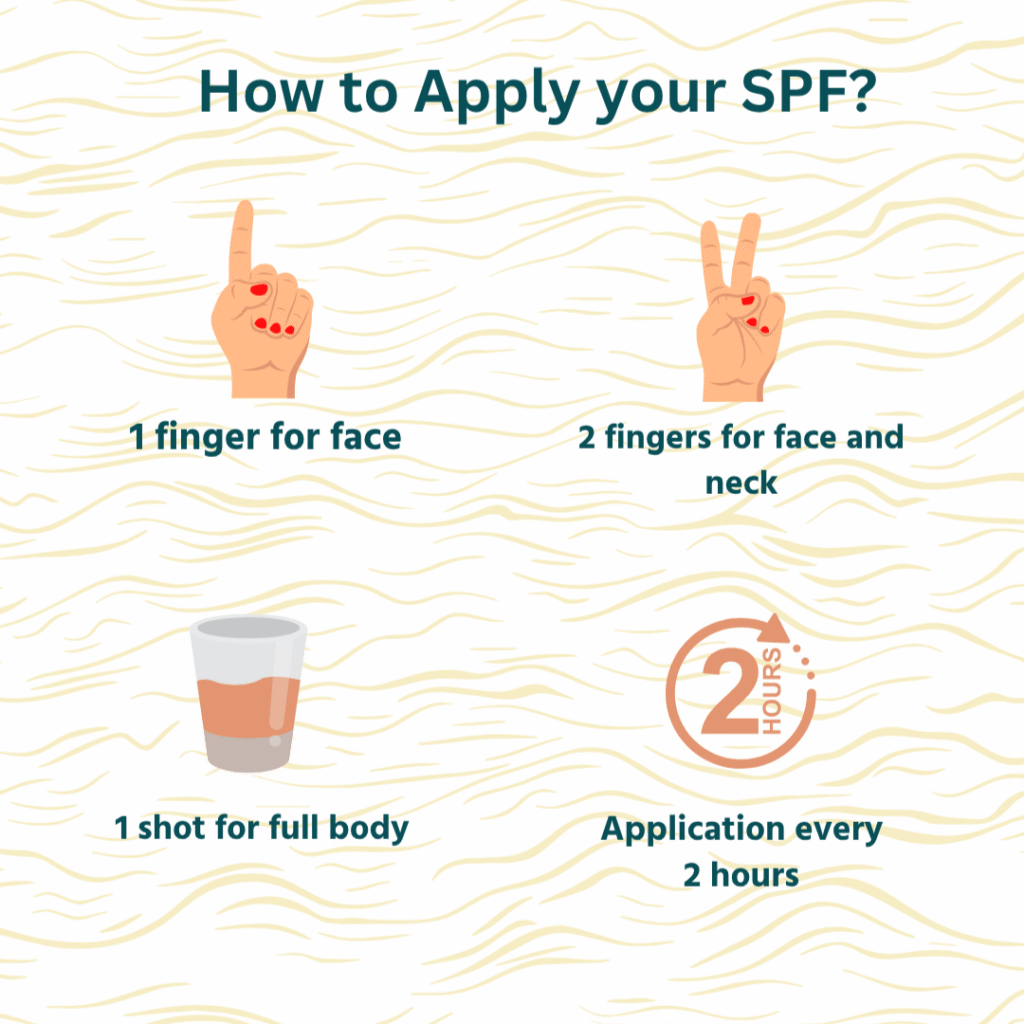
Sunscreen wears off throughout the day, so it’s essential to reapply every 2 hours. If you’re swimming, sweating, or wiping your face, reapply even more often to stay protected.
How To Choose the Right Sunscreen for Your Skin
Not all sunscreens are right for every skin type or concern and that’s where most people get it wrong. Whether you struggle with acne, dryness, or pigmentation, the right SPF can make all the difference.

1- What is your skin type?
Understanding your skin type is the first step to choosing the right sunscreen. Here’s how to shop smart:
– Oily Skin
If your skin tends to get shiny quickly or is prone to breakouts:
- Opt for chemical (non-mineral) sunscreens
- Look for oil-free, fluid, and mattifying formulas
- Bonus: Choose non-comedogenic labels to avoid clogged pores
– Combination Skin
If you’re oily in the T-zone and dry around the cheeks:
- Stick to chemical formulas that are light and fluid
- These offer balanced hydration without the heaviness
– Dry Skin
If your skin feels tight, dull, or flaky:
- Choose mineral-based sunscreens with hydrating cream textures
- Look for ingredients like glycerin, hyaluronic acid, and ceramides
– Sensitive Skin
If your skin reacts easily or flushes often:
- Go for mineral-only SPFs
- Choose creamy, fragrance-free, and alcohol-free textures
2- What’s Your Skin Concern?
Beyond skin type, your current skin concerns also influence what kind of SPF will serve you best:
– Rosacea or Redness-Prone Skin
Your skin needs calming care:
- Stick to mineral sunscreens
- Choose creamy, alcohol-free formulas with anti-inflammatory ingredients like niacinamide or allantoin
– Pigmentation & Dark Spots
If you’re dealing with uneven skin tone or melasma:
- Look for mineral SPFs with fluid or creamy textures
- Prioritize sunscreens with antioxidants like Vitamin C, licorice extract, or ferulic acid
– Acne-Prone Skin
If you’re breakout-prone:
- Choose mineral, oil-free sunscreens in fluid or gel formats
- Seek out formulas that are soothing, non-comedogenic, and often include zinc or niacinamide to calm inflammation
Indoor vs Outdoor SPF

Indoors?
Use SPF 30+, especially if you sit near windows or use screens often.
Outdoors?
Go for SPF 50+ for stronger protection.
Swimming, exercising, or spending time at the beach?
Choose a water-resistant SPF 50+.
Bonus Tips for Kids

Sun protection is just as important for kids as it is for adults and building this habit early sets them up for healthy skin for life.
When it comes to sun protection, children’s skin is more delicate and sensitive — which means it needs extra care.
Babies Under 6 Months
- Avoid direct sunlight completely.
- Dress babies in lightweight, long-sleeved clothing and wide-brimmed hats.
- Use shade whenever possible, a stroller canopy or umbrella is your best friend.
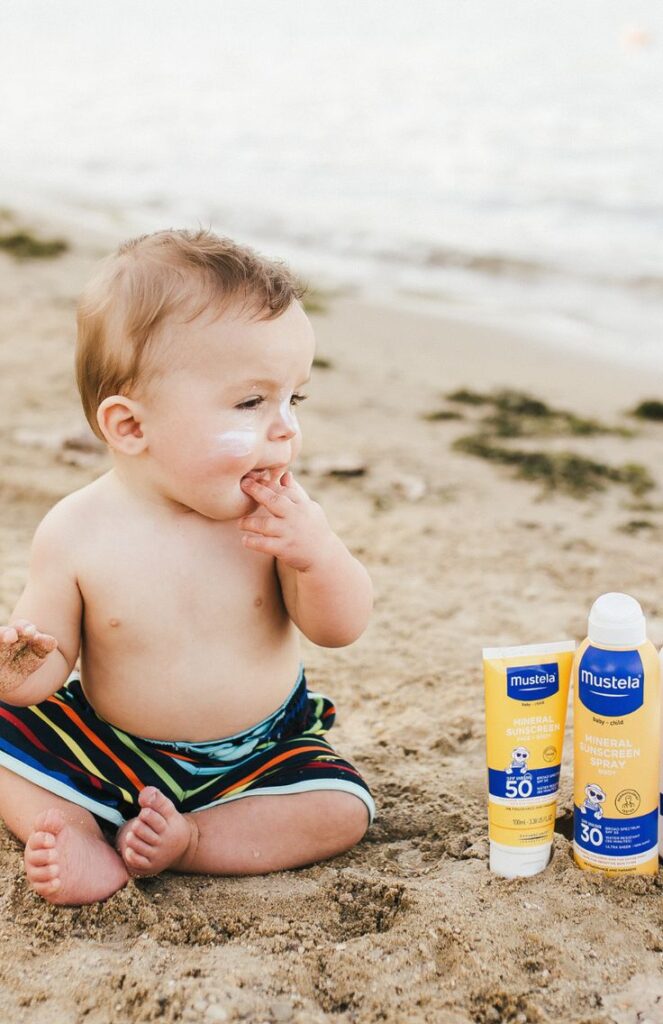
Kids Over 6 Months
Don’t forget commonly missed spots: ears, neck, tops of feet, and backs of hands.
Choose mineral sunscreens with ingredients like zinc oxide or titanium dioxide — these are gentle and less likely to irritate.
Stick formats are great for little faces: they’re quick, mess-free, and fun for kids to use.
Reapply every 2 hours, especially if your child is swimming or sweating.
Because Your Skin Deserves More Than Just Any SPF:
Oily Skin



- La Roche-Posay Anthelios UVMune 400 Invisible Fluid SPF50+
Ultra-light, non-greasy, and invisible on the skin — perfect for oily or acne-prone complexions. - ACM Sebionex Mattifying Sunscreen Gel SPF50
This mattifying gel helps control shine and keeps pores clear throughout the day. - Frezyderm Sun Screen Velvet Face SPF50+
A smooth, velvet finish with no white cast — ideal under makeup for oily skin.
Combination skin



- La Roche-Posay Anthelios UVMune 400 Invisible Fluid SPF50+
Ultra-light, non-greasy, and invisible on the skin — perfect for oily or acne-prone complexions. - ACM Sebionex Mattifying Sunscreen Gel SPF50
This mattifying gel helps control shine and keeps pores clear throughout the day. - Frezyderm Sun Screen Velvet Face SPF50+
A smooth, velvet finish with no white cast — ideal under makeup for oily skin.
Dry Skin



- Eucerin Hydro Protect Ultra-Light Fluid SPF50
Provides high UV protection with added hydration for soft, comfortable skin. - PCA Skin Sheer Tint Broad Spectrum SPF 45
Tinted, lightweight and nourishing — evens skin tone while protecting from sun. - ISDIN Fotoprotector Fusion Water SPF50
A favorite for dry, sensitive skin with its water-based, hydrating texture.
Pigmentation



- Eucerin Pigment Control Tinted Sun Gel-Cream SPF50
Targets pigmentation while offering high sun protection with a tint. - SOSkin Tinted Sunscreen Very High Protection
High-protection formula with natural coverage to blend pigmentation. - Sesderma Azelac RU Luminous Fluid Cream SPF50
Combines sunscreen with brightening ingredients to help reduce melasma.
Sensitive Skin



- Obagi Nu-Derm Healthy Skin Protection SPF35
Gentle, fragrance-free formula ideal for reactive or post-treatment skin. - SkinCeuticals Sheer Mineral UV Defense SPF50
100% mineral sunscreen that protects without irritation. - Avène Ultra-Light Fluid SPF50+
Ultra-light, calming, and formulated with Avène’s signature thermal water.
Acne-Prone Skin



- Uriage Hyséac Fluid SPF50
Non-comedogenic and lightweight — keeps acne-prone skin protected and balanced. - La Roche-Posay Anthelios UVMune 400 Oil Control Gel-Cream SPF50
Combats shine and breakouts while offering powerful sun defense. - Avène Cleanance Sunscreen SPF50
Specially made for acne-prone skin — soothing, oil-free, and mattifying.
Rosacea-Prone Skin



Rosacea-Prone Skin
- Avène Tinted Cream SPF50
Soothing, tinted formula that helps camouflage redness gently. - Bioderma Photoderm Lait Ultra SPF50+
Ultra-hydrating lotion that calms the skin while shielding from UV. - SVR Sensifine AR Cream SPF50+
Formulated specifically for redness and rosacea — reduces flare-ups and protects.










